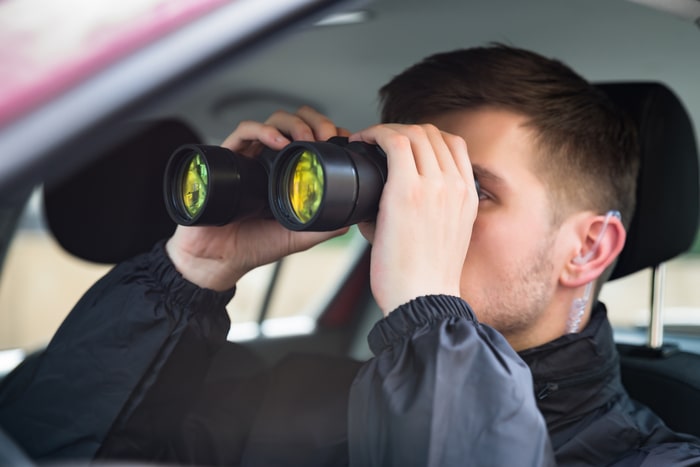
- May 9, 2024
- |security guard company
- | 0
Perfecting Surveillance Techniques –
Surveillance is a fundamental component of security and investigation operations, enabling professionals to gather critical information, monitor activities, and gather evidence discreetly. The art of stakeout, also known as surveillance, requires a combination of skill, patience, and strategic planning to achieve successful outcomes. In this article, we delve into the intricacies of stakeout operations, exploring the techniques, tools, and strategies employed by security professionals to perfect surveillance and enhance situational awareness.
Understanding Stakeout Operations
Stakeout operations involve the covert observation and monitoring of individuals, locations, or activities to gather intelligence, detect suspicious behavior, or gather evidence for investigative purposes. Stakeout operations may be conducted for various reasons, including surveillance of suspects, monitoring of high-risk areas, or gathering evidence for legal proceedings. Successful stakeout operations require meticulous planning, attention to detail, and adherence to legal and ethical guidelines.
Planning and Preparation
Effective stakeout operations begin with thorough planning and preparation to ensure the success of surveillance activities. Some key considerations during the planning phase include:
1. Objective Definition: Clearly defining the objectives and goals of the stakeout operation, including the specific individuals, locations, or activities to be monitored.
2. Target Identification: Identifying the target subjects or areas of interest and gathering relevant intelligence and background information to inform surveillance efforts.
3. Operational Planning: Developing a comprehensive operational plan that outlines surveillance strategies, deployment locations, observation points, communication protocols, and contingency measures.
4. Legal and Ethical Considerations: Ensuring compliance with legal and ethical guidelines governing surveillance activities, including privacy laws, consent requirements, and rules of evidence collection.
Surveillance Techniques
Stakeout operations employ a variety of surveillance techniques and methods to gather information and maintain covert observation. Some commonly used surveillance techniques include:
1. Static Surveillance: Static surveillance involves maintaining a fixed observation position to monitor a specific location or subject discreetly. This may involve using concealed cameras, binoculars, or other optical devices to observe activities from a distance.
2. Mobile Surveillance: Mobile surveillance involves tracking and following subjects or vehicles discreetly to gather intelligence on their movements and activities. This may require the use of covert vehicles, GPS tracking devices, or other tracking technologies to maintain surveillance while on the move.
3. Technical Surveillance: Technical surveillance involves the use of electronic surveillance equipment, such as audio recording devices, video cameras, and GPS trackers, to gather intelligence and evidence covertly. This may include installing hidden cameras or recording devices in target locations or vehicles to capture audio and video evidence.
4. Aerial Surveillance: Aerial surveillance involves the use of aircraft, drones, or unmanned aerial vehicles (UAVs) to conduct surveillance from the air. Aerial surveillance provides a unique vantage point and allows for wide-area monitoring of target locations or activities.
Maintaining Covert Observation
Maintaining covert observation is essential for the success of stakeout operations and requires security professionals to exercise discretion, patience, and situational awareness. Some key principles for maintaining covert observation include:
1. Blend In: Blend in with the surrounding environment and avoid drawing attention to yourself or your surveillance activities. Dress inconspicuously and avoid behaviors that may arouse suspicion.
2. Use Cover and Concealment: Utilize cover and concealment to remain hidden from view while observing subjects or locations. This may involve positioning yourself behind objects, foliage, or structures to maintain a discreet vantage point.
3. Minimize Movement: Minimize unnecessary movement and activity to avoid attracting attention to your presence. Maintain a low profile and avoid making sudden or conspicuous movements that may compromise your cover.
4. Stay Alert: Remain vigilant and attentive to your surroundings at all times. Maintain situational awareness and be prepared to adapt to changing conditions or unexpected developments.
The art of stakeout is a complex and dynamic field that requires skill, patience, and strategic planning to achieve successful outcomes. By employing a combination of surveillance techniques, maintaining covert observation, and adhering to legal and ethical guidelines, security professionals can gather critical information, monitor activities, and gather evidence discreetly. Through meticulous planning, attention to detail, and adherence to best practices, security professionals can perfect surveillance techniques and enhance situational awareness in support of security and investigation operations. Contact us to learn more about us.


